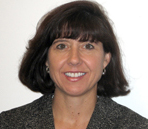July 2012

Monica Kraft, MD
Greetings and thank you for reading my first presidential message!
I am thrilled to be writing this, particularly after such a successful International Conference in San Francisco. Terrific science was coupled with a wonderful city—there was such enthusiasm in the air.
I feel energized for the coming year.
In my inaugural message, I’ll discuss my priorities and what I hope to accomplish during my term. But first, great news: given the improving financial health of the ATS, we are able to think of areas in which we can maintain or advance our status as the place to hear about how the latest science translates into patient care.
The acronym BREATHE best describes the many facets of the ATS and how my goals for the year synergize with them.
B, of course, is for breathe, breath or breathing—that all-important function of our lungs.
R is for research. We will continue to provide research funding to young investigators through the ATS Foundation. Through advocacy at the grassroots level, we will educate elected officials and the public on the impact of lung disease and the need for more research funding. We will bolster our partnership with the National Heart, Lung, and Blood Institute’s Lung Division regarding the important questions for trials, consensus documents, and translational and discovery opportunities.
E is for education. We will expand our offerings for maintenance of certification and hands-on learning. I would like us to explore a new area: how to put our wonderful guidelines into the hands of clinicians in a way that will transform care. This is called Implementation Medicine. The goal would be to reduce the gap and shorten the time lag between evidence and implementation for the treatment of pulmonary, critical care, and sleep disorders. To do this, we need to provide clinicians and patients with educational materials and management tools. We must also consider quality measures based on our guidelines. This is an investment for the organization, so I am putting together a working group to evaluate the resources required and a timeline for implementation.
A is for advocacy. I’ve mentioned expanding our grassroots efforts in collaboration with the ATS Patient Advisory Roundtable (ATS PAR). ATS and ATS PAR members have been visiting their individual states’ elected officials to discuss both local and national initiatives relevant to pulmonary, critical care, and sleep medicine. This initiative was started by ATS Immediate Past President Nicholas Hill, and I will continue to support it. Like Nick, I believe that funding for medical research is something that can enjoy widespread bipartisan support.
T is for trainees. We cannot forget about our next generation. We have active and effective Membership and Members in Transition and Training committees that attract and retain young members to our organization. But the question remains: can we do more? Can we begin to attract trainees to our field as medical students? We are in the midst of exploring ways to invite medical students specifically to our meeting in Philadelphia in 2013, and we’ll make this a topic/action item at our Committee Summit in September.
H is for health worldwide, as we are an international organization. We already have an incredible course—Methods in Epidemiology, Clinical, and Operations Research (MECOR)—that teaches research methods in these disciplines around the world. We also plan to convene a Lung Council, a group of international members who will advise the ATS on where to focus its efforts globally. We will continue to foster our strong relationships with organizations outside the United States, such as the European Respiratory Society, the Asian Pacific Society of Respirology, and the Japanese Respiratory Society. We are also creating new partnerships with the Chinese Respiratory Society, the Saudi Thoracic Society, and the Eurasian Respiratory Society to increase our presence.
E is for Enhancing Revenue, which we hope will be the result of many of the activities described above.
All that we do is really about the patient, and how we can translate our science into the best clinical care. We value our relationship with ATS PAR, and through our integrated efforts, we hope to empower providers to improve the care of our patients.

